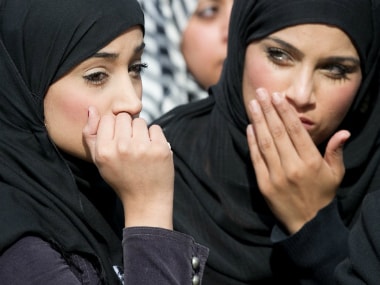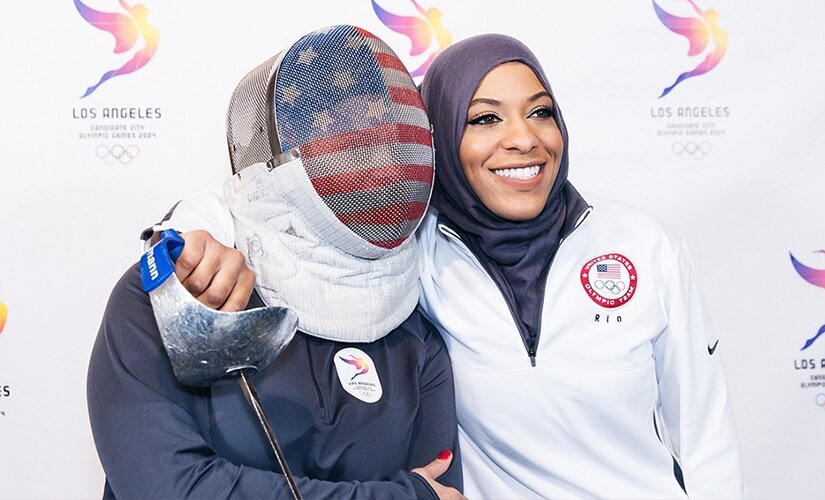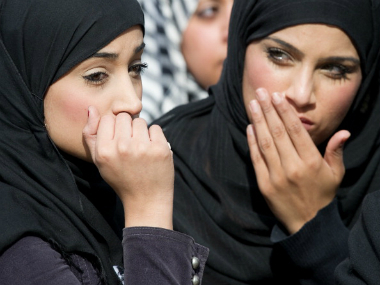The hijab and modernity have been considered antagonistic ever since the West began to view Islam and its components in a negative light. The bizarre doublespeak is evident — while it objects to the use of hijab, it is silent about other such accouter worn by members of other religious communities such as orthodox Jews, nuns etc.
[caption id=“attachment_3026982” align=“alignleft” width=“380”]  More Muslim women, across social classes, are donning the hijab and burqa. File photo[/caption]
With France’s iron-handed approach towards the burkini, the discourse has turned turbulent. Interestingly, the inventor of the burkini Aheda Zanetti, mentioned in an interview: “When I invented the burkini in early 2004 it was to give women freedom and not take it away”. In an ‘advanced’ society such as France, women would certainly like to wear what they feel comfortable in and not what they were forced to wear. In a contrasting and equally interesting development in the conservative Iran, there is a growing trend of Muslim men wearing hijab (ie a head and neck wrap worn without covering the face) or burqa (ie the loose black coat with a face veil) in the public domain to protest against compulsory hijab for women, adopted in 1983 following the Iranian Revolution in 1979. This is the outcome of the noted journalist Masih Alinejad’s campaign on social media asking women to exercise their ‘choice’ in wearing hijab.
France banned such clothing including hijab in public schools in 2006 as it was observed to be a conspicuous sign of religious affiliation. Hijab and burqa, however, have since then been linked to the argument of ‘choice’ by the protesters in Iran than compulsion by State. For some, it was the case of assault on the religious difference and diversity which is located in the hijab as the Islamic symbol of modesty. What confirms the ‘choice’ factor of modest clothing is a noticeable trend of ‘voluntary rise’ in the wearing of hijab or burqa by the Muslim women in certain countries like Egypt, Pakistan, Turkey, India and many more Middle East and European countries where there is no law declaring the veil as compulsory for women.
There can be various aspects of the discourse revolving around the hijab. One, there are people who link hijab and burqa with public display of religious signs and symbols by Muslim women, and uphold the point of Joan Wallace Scott raised in her book, Politics of the Veil, that “individualism and gender equality are both threatened by a population of seemingly subordinate girls wearing at the seeming insistence of religious orthodoxy what appear to be uniform modesty garments”. Second, it is argued that the reason for public display of hijab and burqa is rooted in the cultural logic of a society often dominated by the belief that Muslim women are forced by the males at home to wear these garments which translates to the denial of freedom to women in deciding what to wear in public spaces by cultural patriarchs. Third, hijab or burqa is often stereotyped as deeply embarrassing; often linked with middle class backwardness, indecency, poverty, retrograde mindset and illiteracy.
In my empirical study at Hyderabad while interviewing hundreds of burqa/hijab led girl students, I noted an interesting pattern which is quite in opposition with the earlier propositions. I found that many Muslim women appeared obsessed with hijab and burqa and the obsession was becoming popular even in highly educated, urban and higher class Muslim girls. Many said that hijab provides a sense of security to them. However, this argument does not hold ground as there is a rising incidence of sexual harassment against veiled women too.
Impact Shorts
More ShortsSimilarly, very few female students gave excuses of family pressure, religion, patriarchy or societal force as a cause for their hijab or burqa. Interestingly, there were many who argued that “wearing of hijab or burqa for them is an exercise of ‘choice’ made by them, that too without being affected by the religious orthodoxy and cultural patriarchy”. There were girls who also argued the benefit of the veil in terms of its ability to hide their economic status. It was surprising for me to note that wearing of hijab as a reflection of religious orthodoxy or patriarchal collectivity or middle class mentality was rejected by the majority of the girls as an ‘intellectual misconception’.
There were some girls who completely rejected ‘parda’ and argued that it’s a reflection of mental instability and a tool of male domination, subjugation and an instrument of exclusion. One recited the poetry of Akbar Allahabadi: “Beparda Kal Jo Aayin Nazar Chand Bibiyan, Akbar Zameen Mein Ghairat-e-Qaumi Se Gad Gaya; Poochha Jo Unse Aapka Parda Wo Kya Hua, Kahne Lageen Ke Aql Pe Mardon Ke Pad Gaya”. It was also argued by those who do not like hijab or burqa that “it is not against the Quran to wear the contemporary style of theses attires. Parda is all about controlling your senses and especially your eyes, as described in Sura Noor of the Quran. The ignorance of many women is perpetrated in the name of religion.” Another girl argued that hijab is ‘misogynist’ in the very first instance.
[caption id=“attachment_3027126” align=“alignnone” width=“825”]  The veil has emerged as liberating attire in certain societies. In this image, American fencer Ibthihaj Muhammad competed in the Olympics while wearing a hijab. Photo courtesy Twitter[/caption]
Be that as it may, the pattern of burqa and hijab is altogether transposed now with Middle Eastern flair and new Islamic modernity taking over the last decade or so. What one wears and how one chooses to express oneself has become a matter of personal choice, and one that’s guaranteed to all as part of the constitutional claims. A significant shift is also noted in India among the younger generation Muslim women as compared to earlier times. Today, it is not unusual to find veiled Muslim women in voguish spaces like the coffee shops, shopping centres, movie theatres, educational institutions, corporates and so on. These veiled women announce their conspicuous presence more suavely and with a strong sense of consciousness. It has to be recognised as a new modernity carved out within the boundaries of Islam and without losing Islamic identity as quite vividly the rising tendencies are no longer confined to the low-income and poorly educated Muslim women, rather it is gaining wider acceptability among educated middle class Muslim women.
The popular perceptions of Muslim women on their preferred choice of attire are fast changing. They are rising to the situations when they are faced with an arbitrary ban on modes of dress called for by a religion, culture, society or state. With this articulation, hijab and burqa got a dual meaning in relation of ‘freedom of attire’ both as liberating and dis-empowering. First, the veil has emerged as liberating attire in those societies where there is no legal ban but a cultural, religious and patriarchal pressure to wear it. There are Muslim girls in such societies who opted for hijab and burqa deliberately to defeat the designs of patriarchy and religious limitations and came out from the clutches of their household not only to enjoy the luxuries of liberty but to educate and employ themselves. At the same time, the veil is treated as dis-empowering in those societies where the ban is exercised through legal means. In both situations, ‘choice’ is the ultimate value as well as a great casualty.
In a word, no country is justified in banning the symbols of ‘choice’ in relation with hijab or burqa or categorically declaring it as compulsory attire in the name of social/political/religious morality and modesty. Coercion in any sense is unjustified, logically and religiously. Let the emerging subjectivities of veiled/unveiled Muslim women defy the classical logic of modernity by their conspicuous invention of an alternative modernity through their exercise of sexual freedom in socio-economic and cultural spheres. Seen in the light of developments in the West which are fast percolating across its countries now, passing laws on “What to Wear and What Not” is bound to take it back to the Dark Ages from which it emerged not more than a few centuries ago.
The writer is an associate professor and head of the department of Political Science at the Maulana Azad National Urdu University


)

)
)
)
)
)
)
)
)



